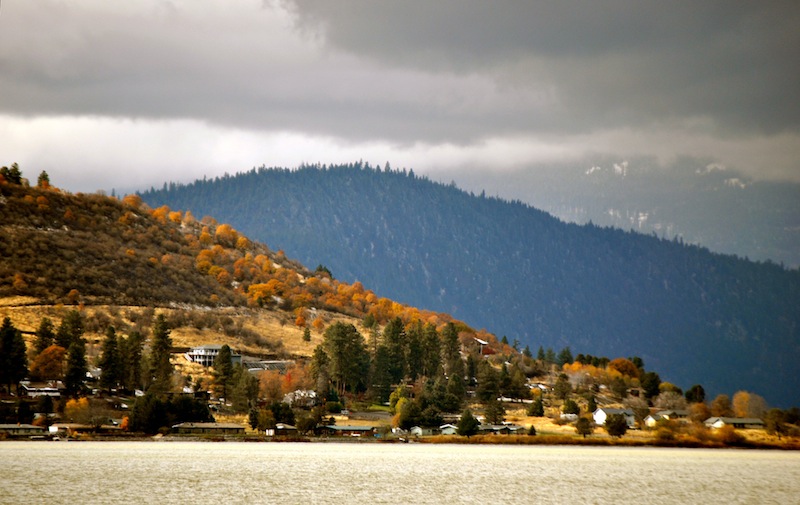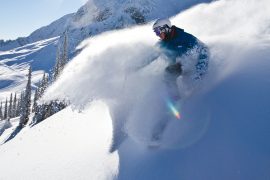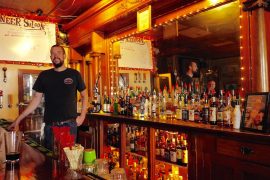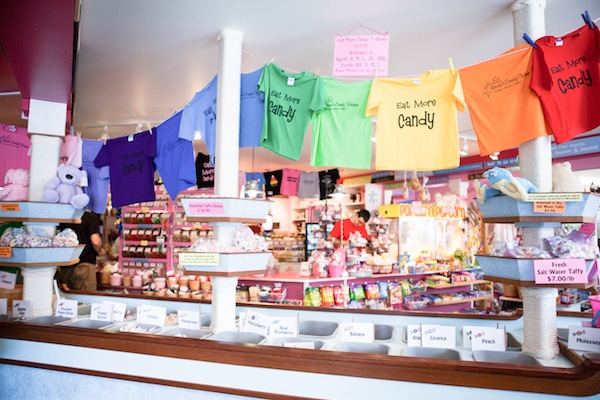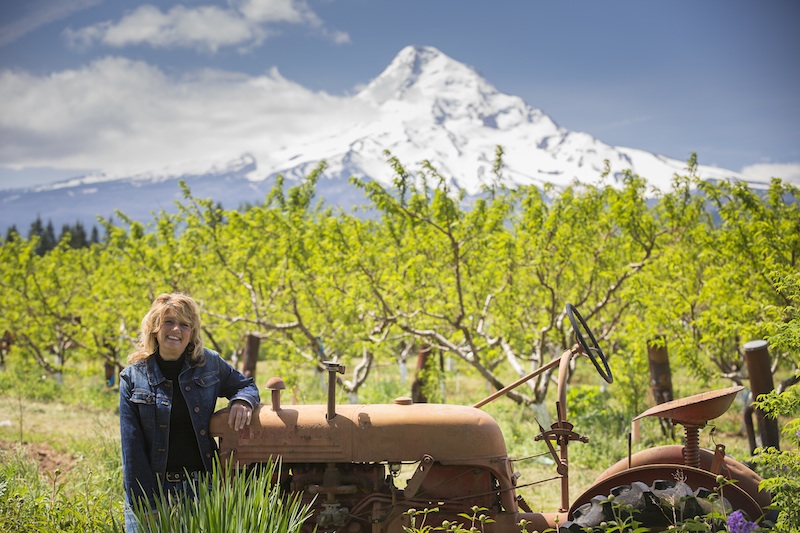Siobhan Cooper was a med student at the University of Arkansas looking for a rural residency program. Her husband was a water quality specialist seeking a basin to study. This young couple might as well have had Klamath Falls created especially for them.
“Klamath Falls was our number one choice,” says Cooper, the brightness of her voice tempered from long hours of work in the medical field. Now one year into Cooper’s three-year rural family medicine program, the dream is a reality for these two Oregon transplants. “For such a small town to have a residency program is great,” says Cooper, 35.
Cooper’s husband, Liam Schenk, works for the U.S. Geological Survey. For a water specialist, this territory provides endless opportunity and revelation for all things related to water. The first surprise for newcomers to the rolling hills and northern expanse of the Great Basin is the abundance of still water. There are no roaring falls at the center of town, as its name suggests. Almost a square mile of the city is part of Upper Klamath Lake, the largest freshwater lake in Oregon by surface area.
The large lake is just a small portion of the Klamath Basin—a watershed network that spans fifteen thousand square miles, extending into northern California (the border is just twenty miles south). For residents of Klamath Falls, it’s a few hours’ drive to bigger cities, but Crater Lake is a short drive, and snow-capped Mount Shasta is an hour south of the state line.
Water is truly the lightening rod of Klamath Falls. The “water wars” made Klamath Falls a national news story in the early 2000s. During a drought in 2001, a court ordered crucial farming irrigation shut to maintain river flows and fish protected under the Endangered Species Act. Farmers and others, fearing the loss of livelihood, protested with a massive bucket brigade, and the court ruling was eventually reversed. With that precious water diverted from the Klamath and Trinity rivers for irrigation, the river levels sank while the water temperature rose, and one of the largest fish kills in U.S. history ensued.
Historically, Native American tribes in this area faced adversity since the settlers first arrived in the Klamath Basin. Today, however, the Klamath Tribe is playing a large role in the water-rights debate, as the tribe owns a crucial portion of the watershed. Discussion is lively, and though no party will walk away totally appeased, this community is working toward innovative solutions.
Water—rather hot water—is also at the forefront of Klamath Falls’ energy solutions. A geothermal hot springs outside of town has been providing heat to much of Klamath Falls for more than two decades. Downtown, government buildings, the Oregon Institute of Technology, public schools, many homes and even snowmelt systems for sidewalks are all heated by geothermal power. In this regard, Klamath Falls could be a national model for the broader future of energy.
Anyone who has driven south on U.S. Highway 97, and into the heart of historic downtown Klamath Falls, has seen its pre-WWII Art Deco architectural heyday. The well-maintained Ross Ragland Theater and Oregon Bank Building (complete with one of the last remaining elevator operators on the West Coast) are two standout reminders of the stylish whim that accompanied the 1920s. Newer additions among the Art Déco history signify Klamath Falls’ steadfast ability to reinvent itself for modern uses.
The Ledge, for example, is a massive state-of-the-art climbing gym and gear shop combination that gives residents a place to convene for exercise in the winter months and beyond. The Oregon Wine Cellar is an underground beer and wine lover’s paradise in downtown. Cooper and Schenk often go to Leap of Taste cafe and deli for its good coffee and local food. Even on a weekday afternoon, the communal space at Leap of Taste is abuzz with conversation and live music.
The city’s website describes Klamath Falls as a “city in transition,” a seemingly valid description. There is a revival in the air in Klamath Falls. After the timber industry boom went bust, the Jeld-Wen window and door manufacturing plant headquarters was the primary employer. Naturally, the collapse of the housing market bruised Jeld-Wen’s business, eventually leading to a takeover by Canadian investment firm, Onyx. Cooper works for Klamath Falls’ current largest employer— Sky Lakes Medical Center.
“Klamath Falls has an incredibly sophisticated medical community for an isolated, rural, small community,” says Dr. Karl Wenner, Cooper’s mentor and a twenty-three-year resident in the community. Wenner—an orthopedic surgeon—and his wife, Anne, serve on a variety of boards and committees in Klamath Falls. They were drawn to the topography. “When I was looking for a place to continue my rural medicine career, I found the topographical maps of each program’s geographical region, and Klamath Falls had, by far, the most interesting terrain,” reflects Wenner. He was sold, and they moved from North Carolina to start a family in Southern Oregon.
With their own first baby due in April, Cooper and Schenk are also starting a family in Klamath Falls. “A lot of the people who are new to the area, many from California, are in love with the place like us,” says Cooper. “They say this is the town for them.”
Livability in Oregon, however, begins with craft beer, and so much the better if it’s made in a converted creamery and from geothermal power. Klamath Basin Brewing Company, or what locals refer to as “The Creamery,” is such a place, built in the old Crater Lake Creamery and opened in 2005. Aside large steel tanks, brewmasters work their magic making the only beer in the world purely from geothermal energy.
Aside from its capital projects, birds are also a key to Klamath Falls’ redevelopment. Birding and bird hunting define Klamath Falls’ niche in the naturalist and outdoorsman communities. The landscape is flocked with unfathomable numbers and varieties of birds. More than a million waterfowl alone stopover in the region’s marshes and lakes. The bald eagle population is thought to be in quadruple digits (the highest concentration in the contiguous forty-eight states). Altogether, nearly 400 species of birds have been observed in the Klamath Basin area, making it the who’s who in bird watching along the Pacific Flyway.
Located ten miles outside downtown, Running Y Ranch is its own breed of elusive bird—a locally owned resort. The resort genuinely welcomes locals, in addition to offering relaxing and modern lodge accommodations and fine dining in comfort food style, with an Arnold Palmer golf course. The Bill Collier Ice Arena at the entrance to Running Y is a mainstay for locals who play school and adult club hockey and participate in the curling league on Sundays.
Wenner cites the classic contradiction regarding his town. “The downside is that Klamath Falls hasn’t been discovered yet, and the upside is that it hasn’t been discovered yet.”
Klamath Falls by the Numbers
Population of Klamath Falls: 21,120
Population growth (2000-2011): +8.5%
Median household income: $33,203
Median single-family home price: $119,500


